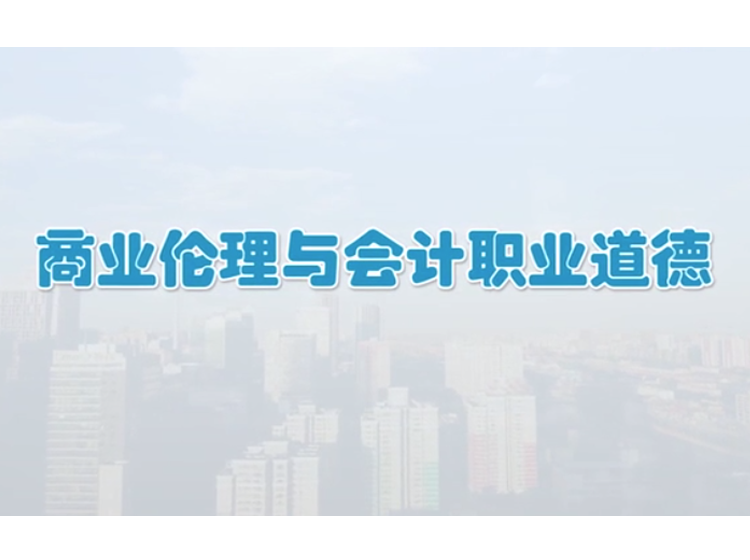
当前课程知识点:Production Engineering > Chapter 5 Gas Lift > 5.3 Gas Lift Design > 5.3.1 Gas Lift Design for Specific Production Rate
返回《Production Engineering》慕课在线视频课程列表
返回《Production Engineering》慕课在线视频列表
同学们好
从本节开始我们学习气举的设计方法
气举设计分为工作阀深度的设计
和启动阀深度的设计
其中工作阀深度的设计
又分为定产量设计和定注气量设计
本节我们介绍定产量设计的方法
在介绍具体的设计方法之前
我们首先看一下气举井的
压力分布状况是什么样子的
首先 我们先看一下
环空内压力分布是如何计算的
一般情况下
我们是采取这样一个计算式来确
定环空内不同位置的压力
其中x表示的是不同的环空内的深度
Pso是环空从井口位置开始的注入压力
也就是说
环空内的压力分布
是以井口的注入压力为基础
考虑了环空内不同深度的气柱重力
两部分合成得到的
那么这个压力随深度的曲线
就是这样的一种形式
也就是从井口的注入压力开始
一根略向右倾斜的直线
它就表达了环空内的不同深度的压力情况
我们再来看油管内的压力
油管内的压力在地层的流压这个作用之下
向上做多相管流
我们可以得到这根红线
也就是从井底的流压开始
逐渐地克服井筒内的流动阻力
压力逐渐降低得到的这样一根线
当然这样的一个流动过程里面
是没有气举的气体注入的
它的压力梯度相对来说是比较大的
我们可以将这个压力梯度称为Gfb
环空内的压力分布线
这是井筒中油管内的压力分布线
这两条线的交点有什么意义
这两条线的交点就意味着在
对应这个交点的特殊的位置上
油管的外部环空中的压力
跟同一个深度下油管内的压力是相等的
也就意味着在这个位置上
如果油管开一个孔的话
流体不会往外流
外边的流体也不会往里流
是一个平衡的状态
因此将这个点称为平衡点
同学们可以考虑
如果真的是在这个位置开了一个孔
环空内注入的气体能够
通过这个孔注入到油管内部吗
我们说是不可以的 为什么
是因为这样的一个孔
如果气体通过的时候是需要一定的压力
换句话说是需要克服一定的阻力
过阀的阻力
才能够注入进去的
因此我们将这样的一个点向上上提一段距离
就形成了我们所说的注气点
上提这段距离
就意味着在注气点的这个位置上
油管的外部
是这个压力而油管内部是这个压力
所以油管的内外就有一个压力差△P
那么这个压力差我们就称它为平衡点气体压力
与注气点油管内的压力之差
一般情况之下
这个压力差我们取得是0.5到0.7兆帕
当然 不同的气举阀的结构
这个压力差是不一样的
换句话说 提供这样一个上提的注气点
就是使得我们在注气点的位置
安装气举阀之后
考虑到了气举阀过阀的阻力的问题
也就是它克服了气举阀的流动阻力
好 那么下面我们就来介绍定产量设计的
主要的方法和步骤
定产量的设计其实就是定产量和井口油压
来确定注气点的深度和注气量
这种时候我们已知的条件有如下的四个方面
一个是产量
也就是油藏给我们的配产是多少
井口压力Pwh
Pso井口的注气压力
也就是压缩机的输出压力
还有油井的IPR流入动态关系
我们要设计什么
设计的是注气点的深度
注气点的深度
也就意味着是工作阀的位置
除此之外还有注气量
那么我们采用的方法是什么
采用的方法就是我们前面讲过的
以井口为求解点的节点分析的方法
好 下面我们看一下
具体的设计步骤是怎么样的
首先 我们先由给定的产量
根据油井的IPR来确定井底流压
也就是根据IPR曲线
由配产我们能确定井底的流压是多少
因为我们给定了产量 有了井底流压
我们就可以由井底向上
沿井筒进行多相管流的计算
得到曲线A就是这条红线
下一步就是计算环空内的压力分布
这条线B也就是我们前面所讲的
环空内由注入点
向下沿环空不同深度的分布线
这条线B
由A这条线和B这条线的交点
我们得到了平衡点
那么平衡点上移一段我们就得到了注气点
也就是得到了工作阀的这个位置
得到了工作阀的位置之后
因为我们不知道应该注多少气合适
我们就需要假设不同的注气量
在这个点注入到井筒中 看一下
在不同注气量的情况之下
由注入点到井口的压力分布是什么样子的
这就是假设不同的注气量
计算出总的气液比
利用多相管流计算出注气点以上的压力分布
这时候大家可以考虑一下
如果总的气液比越高的时候
得到的压力分布线
是靠左边的还是靠右边的
根据多相管流的知识我们知道气液比越高
就意味着在垂直井筒流动的时候
它的重力损失越小
重力损失小了
它的压力梯度就变小了
这个时候这个曲线应该是向右的
靠右的曲线得到的井口的油压是越高的
因此井口的压力跟总气液比的关系
是一个正向的关系
我们得到这样一条曲线
横轴是总气液比 纵轴是井口压力
我们看到它是一条正向的关系
那么这样的一个关系做节点分析
是怎么做的
我们要求给定的井口压力
在这个位置画一条平直线跟这条曲线的交点
其实对应的就是我们要求的总气液比是多少
在这个总气液比下
我们就可以实现我们给定的井口压力
这就是由节点分析方法得到了总的气液比
由总的气液比如何求注入的气液比
我们是采用了这样一个公式
Rp表达的是油井的自由气的量
是它自身的气体的量
那么要注入的气液比应该是需求的总气液比
减掉自身的自由气的气液比
得到的就是注入的气液比
得到了注入的气液比
那么注入的气量就是用气液比
乘以我们配产的这个原油的产量
就可以得到注入的气量了
以上就是定产量和井口油压来确定
注气点深度和注气量的主要步骤
同学们再见
-1.1 Main Tasks of Production Engineering
--1.1 Main Tasks of Production Engineering
-1.2 Flow in Production System
--1.2 Flow in Production System
-Problems
--Chapter 1 - Problems
-2.1 IPR Curve and Well Productivity
--2.1.1 Single-Phase Oil Inflow Performance Relationships
-2.2 Vogel's IPR and Applications
--2.2.2 Determination of IPR Curves Using Vogel's Equation
--2.2.3 Skin Factor and Flow Efficiency
--2.2.4 Extension of Vogel's Equation for Non-Complete Wells
--2.2.5 Combination Single-Phase Liquid and Two-Phase Flow
-Problems
--Chapter 2--Problems
-3.1 Two-Phase Flow in Wellbore
--3.1.1 Flow Regimes in Vertical Flow
-3.2 Two-Phase Vertical Flow Pressure Gradient Models
--3.2.1 Two-Phase Pressure Gradient Equations
--3.2.2 Predicting Gas-Liquid Flow Regimes Using the Okiszewski Correlation
--3.2.3 Pressure Gradient Calculation Using the Okiszewski Correlation
-3.3 Vertical Lift Performance
--3.3 Vertical Lift Performance
-Problems
--Chapter 3--Problems
-4.1 Nodal Analysis Approach
--4.1.2 Solution Node at Bottom of Well
--4.1.3 Solution Node at Wellhead
-4.2 Flow through Chokes
--4.2.2 Solution Node at Choke
-Problems
--Chapter 4--Problems
-5.1 Principles of Gas Lift
--5.1.2 Initial Kick-off of Gas Lift
-5.2 Gas Lift Valves and Gas Lift Completions
-5.3 Gas Lift Design
--5.3.1 Gas Lift Design for Specific Production Rate
--5.3.2 Gas Lift Design for Specific Injection Rate
--5.3.3 Kick-off Procedure with Unloading Valves
--5.3.4 Design Depths of Unloading Valves
-Problems
--Chapter 5--Problems
-6.1 Introduction of Surface and Downhole Equipment
-6.2 Operating Principle of Sucker Rod Pumps
-6.3 Pumping Unit Kinematics
--6.3.1 Motion of Polished Rod-Simple Harmonic Motion
--6.3.2 Motion of Polished Rod-Crank and Pitman Motion
-6.4 Polished Rod Load
--6.4.3 Peak Polished Rod Load and Minimum Polished Rod Load
-Problems
--Problems for chapter 6: Sucker Rod pumping I
-6.5 Calculation of Counterbalancing, Torque and Power
--6.5.1 Balance of Pumping Unit
--6.5.2 Counterbalancing Calculation
--6.5.3 Torque and Torque Factor
-6.6 Volumetric Efficiency of Pump
--6.6.2 Gas Effect on Pump Performance
--6.6.3 Measures of Enhancing Pump Volumetric Efficiency
-6.7 Design of Pumping System
--6.7.1 Strength Calculation and Design of Sucker Rod Strings
--6.7.2 Design Procedures of Pumping System
-6.8 Analysis of Sucker Rod Pumping Well Conditions
--6.8.1 Acoustic Surveys and Analysis of Annular Liquid Levels
--6.8.2 Introduction of Dynamometer Card
--6.8.3 Typical Dynamometer Cards
-Problems
--Problems: Chapter 6: Sucker Rod Pumping (II)
-7.1 Water Injection System
--7.1.1 Water Resources and Water Treatment
--7.1.2 Introduction of Water Injection System
-7.2 Injectivity Analysis
--7.2.1 Injectivity and Injectivity Index Curves
-7.3 Injection Tubing String
--7.3 Introduction of Injection Tubing Strings
-7.4 Analysis and Application of Injectivity Index Curves
--7.4.1 Analysis of Injectivity Index Curves
--7.4.2 Injection Choke Deployment
-Problems
--Chapter 7--Problems
-8.0 Introduction
-8.1 The Fracturing of Reservoir Rock
--8.1.1 Basic Rock Mechanics Parameters
--8.1.4 Fracture Initiation Conditions
-Problems
--Chapter 8(I)--Problems
-8.2 Fracturing Fluids
--8.2.2 Fluid-Loss Properties of Fracturing Fluids
--8.2.3 Rheological Properties of Fracturing Fluids
-8.3 Proppants
-8.4 Hydraulic Fracturing Design
--8.4.1 Productivity Index of Hydraulic Fracturing Wells
--8.4.2 Fracture Geometry Models
--8.4.3 Design Procedure for Hydraulic Fracturing
-Problems
--Chapter 8(II)--Problems
-9.0 Introduction
-9.1 Carbonate Acidizing
--9.1.1 Mechanism of Carbonate Acidizing
--9.1.2 Effect Factors of Reaction Rate
--9.1.4 Effective Distance of Live Acid
-9.2 Sandstone Acidizing
--9.2.1 Mechanism of Sandstone Acidizing
--9.2.2 Mud Acid Treatment Design
-9.3 Acidizing Treatment Technologies
--9.3.2 Acidizing Treatment Operations
-Problems
--Chapter 9--Problems
-Final Exam
